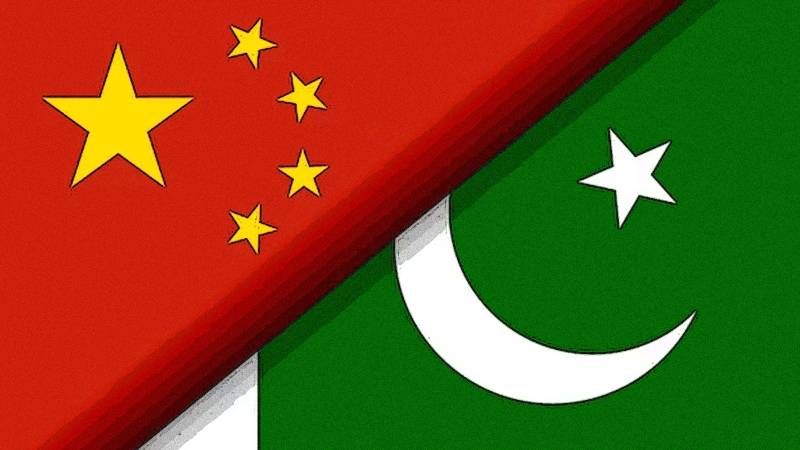
Dr Ejaz Hussain reviews Ayesha Siddique’s book which examines China’s rise as a global power and its relationship with Pakistan.
My alma mater, Forman Christian College (now a charted university), has, over the years, emerged as a dynamic center of learning and knowledge production particularly in political science. In this respect, the FCCU’s Centre for Public Policy and Governance (CPPG), founded and headed by veteran Pakistani political scientist, Professor Dr Saeed Shafqat, is playing a pivotal role by not only offering MS and PhD programs in public policy ─ which is one of the core areas of political science ─ but also according academic supervision and environment to young researchers engaged in scientific research on various aspects of policy analysis. Indeed, some recent studies published by CPPG has attempted to analyze Pakistan’s foreign policy towards major powers such as the Unites States and China.
The FCCU is the only American university in Pakistan, which is producing quality work consistently. Interestingly, despite being an American institution led by experienced American academics and administrators, the university in general and the CPPG in particular is also focused on China, which is trading in billions of US dollars with the US regardless of regional and global geopolitics. Importantly, China is the only neighbor with which Pakistan has cordial relations for decades.
Nevertheless, China-Pakistan relations are often seen by scholars and political observers from a geopolitical perspective. Empirically, such studies are grounded in the historicity of bilateral interactions, starting with the making of the communist state in 1949. Ghulam Ali’s China-Pakistan Relations (OUP, 2017) is a case in point. Ali’s pioneering work ─ which is the first ever book-length academic study of China-Pakistan relations by a Pakistani scholar ─ has served a point of reference for CPPG based young woman scholar, Ayesha Siddique, who did her M.Phil/MS thesis with Dr Saeed Shafqat on analyzing the implications of the rise of China for China-Pakistan relations in the current context. Noticeably, her thesis has been published as a book titled China-Pakistan Relations in the Twenty-First Century by CPPG itself ─ which puts it as a marker of academic dynamism, epistemological outreach and dissemination of policy prescriptions.
Thematically, the book is centered on China’s rise economically, technologically and scientifically. Indeed, since 2010, China, while surpassing many a regional economy such as Japan, has become the second largest economy of the world. Currently, China is a leading trading partner of major world economics, i.e. US, EU, ASEAN. Methodologically, employing a qualitative method, the researcher has systematically explored, and effectively utilized, primary as well as secondary data sources such as official reports of Chinese government on, for example, the conception of China’s Belt and Road Initiative (BRI) that was launched by President Xi Jinping in 2013.
Organizationally, Ayesha’s China-Pakistan Relations in the Twenty-First Century is systematically divided into seven, concisely written, chapters followed by an overall conclusion, bibliography and, importantly, index that helps to negotiate the text conveniently. In addition, the book carries a foreword by FCCU’s current rector, Jonathan Addleton, who shared his diplomatic insights on the unique character of China-Pakistan relations. Similarly, as editor of the CPPG monograph series, Dr Saeed Shafqat has underscored the scholarly and institutional background for the current study in his meaningfully composed note.
While not diving into the history of China-Pakistan relations, Siddique seems to have purposefully picked the China-Pakistan Economic Corridor (CPEC) and the Asian Infrastructure Investment Bank (AIIB) to not only identify the ‘transformative role’ of these institutions in enhancing bilateral engagement but also analyze China’s rise through these bilateral and multilateral measures.
Diplomatically, though China and Pakistan established ties in May 1951, the two sides came closer in the wake of Sino-India war of 1962. The following year, the first China-Pakistan trade agreement was signed under which both countries accorded the Most Favored Nation (MFN) trading status to each other. Consequently, China assisted Pakistan with long-term credit for industrial development and growth. Following Pakistan-India war of 1965, the two countries also collaborated militarily.
However, owing to the Cold War compulsions, defense cooperation prevailed over commercial engagement. Indeed, period to China’s ‘reform and opening up’ policy, initiated in 1978 by post-Maoist leader, Deng Xiaoping, China was generally counted as a low-income country, facing myriad issues such as extreme poverty. Hence, beyond a point, Beijing faced structural constraints as far as economic assistance, i.e. foreign aid, to developing countries was concerned. Little wonder, despite trade agreement the two sides struggled to take further institutional initiatives to expand bilateral trade whose volume remained extremely in the (post-) Cold War period.
Interestingly, however, China has made remarkable progress in manufacturing, human resource development, industrial output as well as global trade in the past 45 years. Resultantly, China is presently not only the world second largest economy but has also attained global recognition due to its constructive role in various international and regional organizations such as the Unites Nations Organization (UNO) ─ where it is a permanent member of the UN Security Council ─ and World Trade Organization (WTO). With an increase in global trade and market connectivity on account of ‘reform and opening up, China-led by President Xi Jinping launched the BRI in 2013; CPEC is an important component of the BRI, connecting China with the Gulf, African and even European markets. It can also be extended to Central Asia via Afghanistan argued the author who has, overall, taken an optimistic view of CPEC that carry the potential to transform Pakistan is otherwise dwindling economy.
Empirically, the author has cited various CPEC projects, some of which were completed in the first phase (2015-2020), to highlight the ‘transformative’ significance of China-Pakistan Economic Corridor. Indubitably, as per official data (accessed by the reviewer on 4 October 2023 from https://cpec.gov.pk/progress-update) 14 projects have been completed under the ‘energy’ category ─ only two projects have been completed in the ongoing year so far. In addition, under the said category, two projects are under construction while five are under consideration.
Moreover, under the ‘infrastructure’ category, only six projects are completed since the launch of the Corridor in 2015. Five projects, in this category, are under construction whereas 13 projects are stuck in the policy pipeline (under consideration). As far as Gwadar development is concerned, four projects have been completed whereas six projects are in progress; and four projects are under consideration. Nevertheless, to reap benefits from CPEC optimally, China and Pakistan need to prioritize Gwadar development as well as the construction of Special Economic Zones (SEZs) posited the author.
As regards the ‘transformative’ role of the Asian Infrastructure Investment Bank, Ayesha Siddique has underlined the financial and developmental capacity of the AIIB, which comparatively possess more financial worth compared to its competitors such as the World Bank (WB) and the Asian Development Bank (ADB). These banking systems are influenced by the US. The latter’s institutional say is much more pervasive in the case of the WB due to its voting power ─ and, by extension, the International Monetary Fund (IMF) is also controlled by the US in policy terms. Contrarily, the AIIB is a Chinese initiative; it was launched in 2015. Pakistan, being China’s strategic partner, became one of the fifty-seven founding members of the bank. Importantly, Pakistan happened to be the first country to receive development assistence from the AIIB. The author has not only provided details of the AIIB-led projects in various parts of the country in tabular but is also optimistic about the constructive role of the AIIB in the development of flagging economics such as ours.
Having empirically and comparatively analyzed the transformative role of CPEC and AIIB, Siddique has also provided valuable insights on the technological, educational and cultural cooperation between China and Pakistan in the 21st century. Technologically, both sides find more opportunities, courtesy CPEC and AIIB, for institutional collaboration in various fields such as agriculture, water conservancy, digital communication, medical and health sector as well as space exploration. Educationally, though fewer Pakistani students flew to China during the Cold War period, the number surpassed thirty thousand in recent years due to the transformative impact of CPEC, that opened information, (visa) facilitation and financial, i.e. scholarship, windows for the Pakistani youth which constitute around 64 per cent of the population. Besides Pakistani youth, the Chinese students are also finding placement at Pakistani universities.
However, there is need to attract more Chinese students and scholars as comparatively their number is low noted the author. Culturally, the governments of both the countries have adopted various institutional measures to promote cultural understanding between the two societies. With CPEC in the limelight, the Chinese language is getting popular in Pakistan. Having sensed it, the Chinese universities are collaborating with their Pakistani counterparts in terms of establishing Confucius Institutes and ‘sister cities’. However,
bilateral tourism is still below the mark and the two sides need to devise mechanism to promote cultural capital for a shared future argued the author.
Last but not the least, China and Pakistan face various challenges. China has to deal with a liberal world order centered around American economic, military and cultural capabilities. The US, no doubt, is still the leading economy and a strong military in the world, maintaining more than 800 military bases around the world. Though the US-China trade ties are intact despite situational shocks, mutual misgivings get visible when it comes to trade deals with dynamic economies, for example, in the Indo-Pacific. In addition, Taiwan is another geopolitical challenge that China has to overcome.
However, the author argues that the Communist Party of China (CPC) has have the administrative capability, political will and policy vision to guide its society and economy effectively. Indeed, the way the CPC dealt with Covid-19, while taking drastic measures, reflects on the agency of the party, which is the largest political party/organization in the world. As regards Pakistan, it faces multiple issues ranging from poor governance to political and economic instability. Pakistani authorities ought to learn from their Chinese counterpart about political will, pro-poor policies and policy continuation. However, given differences in political and party systems, it is prudent for Pakistan to improve upon its existing political system so that it generates the capacity to accrue benefits from CPEC, AIIB and other China-led initiatives for the masses currently mired in extreme poverty.
Finally, the book has contributed to the literature on China-Pakistan relations in terms of invoking the institutional capacities of both CPEC and AIIB for technological, educational, cultural and, above all, economic cooperation between the two countries, societies and economies in the coming years of the ongoing century. Put differently, this book has , on the one hand, offered a horizontal analysis of China-Pakistan relations through a rigorous analysis of economic, technological, educational and cultural cooperation bwteenb the two countries and, on the other, presented convincing views on vertical expansion of ties both at the state and societal level. Moreover, it is a well-organized and argued text, which is also reader-friendly.
In view of the foregoing, China-Pakistan Relations in the Twenty-First Century by Ayesha Siddique is a recommend read for students, scholars and policy makers with interest in China-Pakistan relations especially China-Pakistan Economic Corridor and the Asian Infrastructure Investment Bank.
Citations

